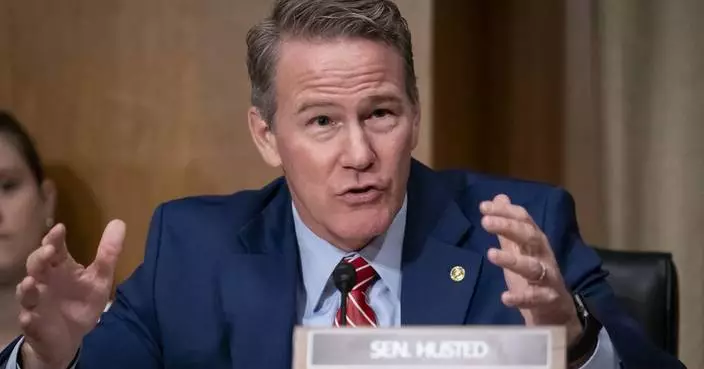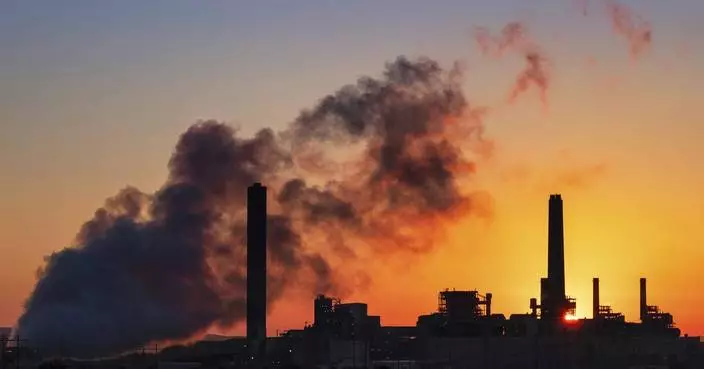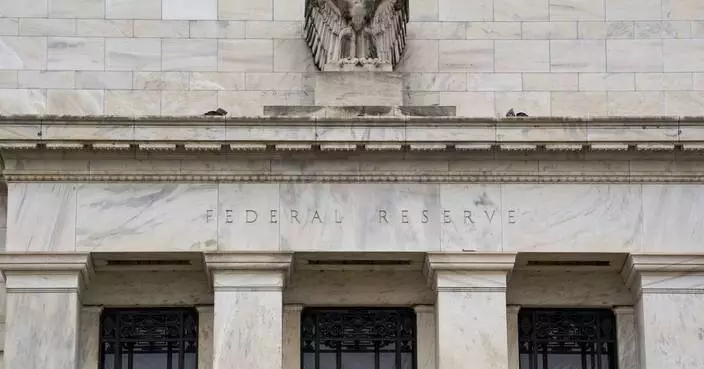Baltimore Ravens fans are being urged to donate to a group supported by Buffalo Bills tight end Dalton Kincaid, who had a pass go through his arms late in last weekend's playoff loss to the Kansas City Chiefs.
This effort comes after a Bills fan started a fundraiser for a charitable cause supported by Ravens tight end Mark Andrews, whose dropped 2-point conversion helped seal Buffalo's win over Baltimore in the divisional round.
According to a GoFundMe page Wednesday night, over $20,000 had been raised for Summit Educational Resources. The Summit Center, located in western New York, provides programs to children and adults with developmental, social and behavioral challenges. Last April, Kincaid visited with students and staff at Summit Academy.
According to the page, the fundraiser was organized by Will Funk-Heiser of Catonsville, Maryland.
“We want Ravens flock to donate to Summit Center for autism, the charity Dalton works with and try and return the favor Bills mafia did for us and Mark Andrews,” the page said.
AP NFL: https://apnews.com/hub/nfl

Kansas City Chiefs linebacker Nick Bolton, right, breaks up a pass intended for Buffalo Bills tight end Dalton Kincaid during the first half of the AFC Championship NFL football game, Sunday, Jan. 26, 2025, in Kansas City, Mo. (AP Photo/Charlie Riedel)
NEW YORK (AP) — U.S. stocks on Thursday are giving back a chunk of their historic gains from the day before as Wall Street weighs a global trade war that has cooled in temperature but is still threatening the economy.
The S&P 500 was down 3%, a day after surging 9.5% following President Donald Trump’s decision to pause many of his tariffs worldwide. The Dow Jones Industrial Average was down 981 points, or 2.4%, as of 10:10 a.m. Eastern time, and the Nasdaq composite was 3.7% lower.
Even a better-than-expected report on inflation Thursday morning wasn’t enough to get U.S. stocks to add to their surges from the day before, including the S&P 500’s third-best since 1940. Economists said the data wasn’t very useful because it offered a view only of the past, when inflation may rise in coming months because of tariffs.
A better-than-expected report on joblessness didn’t help much either, with Wall Street’s focus entirely on what’s to come.
“Trump blinks,” UBS strategist Bhanu Baweja wrote in a report about the president’s decision on tariffs, “but the damage isn’t all undone.”
Trump has focused more on China, raising his tariffs on its products to 125%. Even if that were to get negotiated down to something like 50%, and even if only 10% tariffs remained on other countries, Baweja said the hit to the U.S. economy could still be large enough to hurt expected growth for upcoming U.S. corporate profits.
China, meanwhile, has reached out to other countries around the world in hopes of forming a united front against Trump. The European Union, though, on Thursday said it will put its trade retaliation measures on hold for 90 days and leave room for a negotiated solution.
Trump and his Treasury secretary, Scott Bessent, sent a clear message to other countries Wednesday after announcing their tariff pause: “Do not retaliate, and you will be rewarded.”
Many on Wall Street are preparing for more wild swings in the market, after the S&P 500 at one point nearly dropped into a “bear market” by almost closing 20% below its record. Often, the whipsaw moves have come not just day to day but also hour to hour. The S&P 500 still remains below where it was when Trump announced his sweeping set of tariffs last week on “Liberation Day.”
“Everything is still very volatile, because with Donald Trump, you don’t know what to expect,” said Francis Lun, chief executive of Geo Securities. “This is really big uncertainty in the market. The threat of recession has not faded.”
One encouraging signal, though, is coming from the bond market, where stress seems to be easing.
The bond market has historically played the role of enforcer against politicians and economic policies it deemed imprudent. It helped topple the United Kingdom's Liz Truss in 2022, for example, whose 49 days made her Britain’s shortest-serving prime minister. James Carville, adviser to former U.S. President Bill Clinton, also famously said he'd like to be reincarnated as the bond market because of how much power it wields.
Earlier this week, big jumps for U.S. Treasury yields had rattled the market, so much that Trump said Wednesday he had been watching how investors were “getting a little queasy.”
Several reasons could have been behind the sharp, sudden rise, including hedge funds having to sell their Treasurys in order to raise cash or investors outside the United States dumping their U.S. investments because of the trade war. Regardless of the reasons behind it, higher yields on Treasurys crank up pressure on the stock market and push rates higher for mortgages and other loans for U.S. households and businesses.
But the 10-year Treasury yield has calmed over the last day, following Trump's U-turn on tariffs, and was sitting at 4.30%. That’s after it had shot up to nearly 4.50% Wednesday morning from just 4.01% at the end of last week.
In stock markets abroad, indexes rallied across Europe and Asia in their first chances to trade following Trump’s pause. Japan’s Nikkei 225 surged 9.1%, South Korea’s Kospi leaped 6.6% and Germany’s DAX returned 5.2%.
AP Business Writers Yuri Kageyama and Matt Ott contributed.
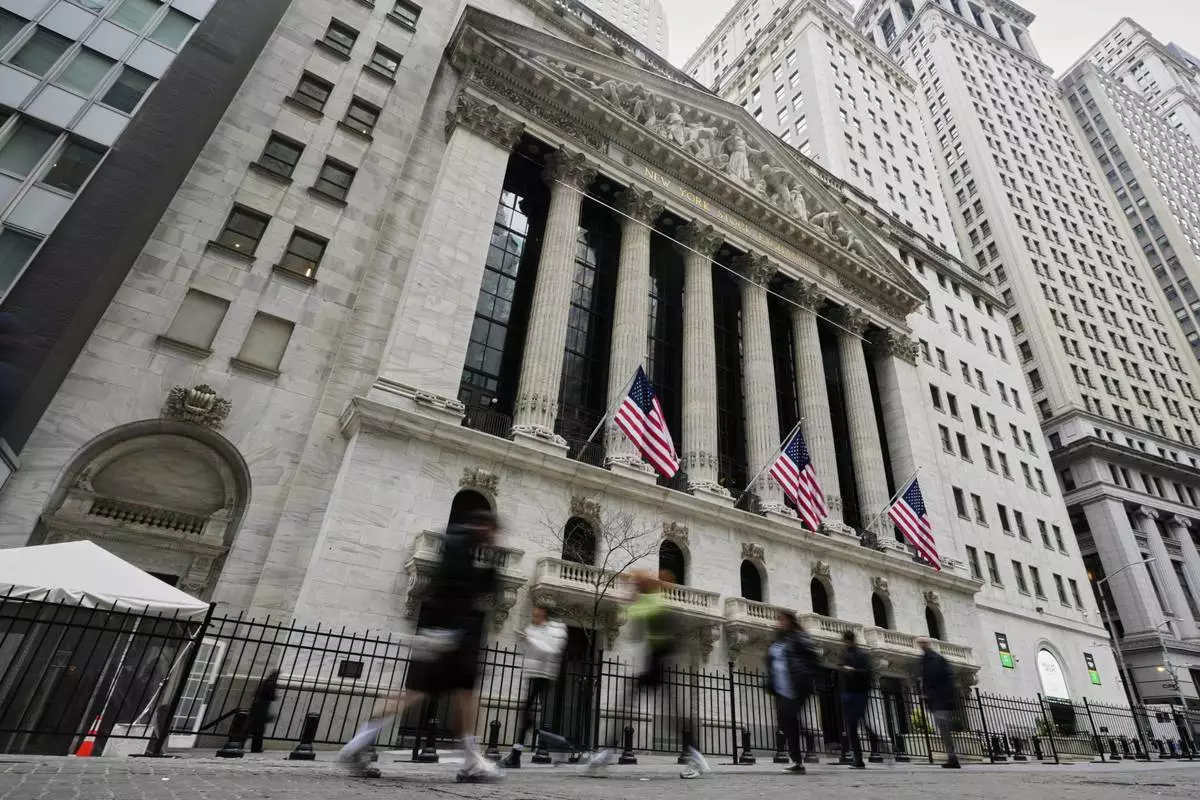
People walk by the New York Stock Exchange, Thursday morning, April 10, 2025. (AP Photo/Richard Drew)
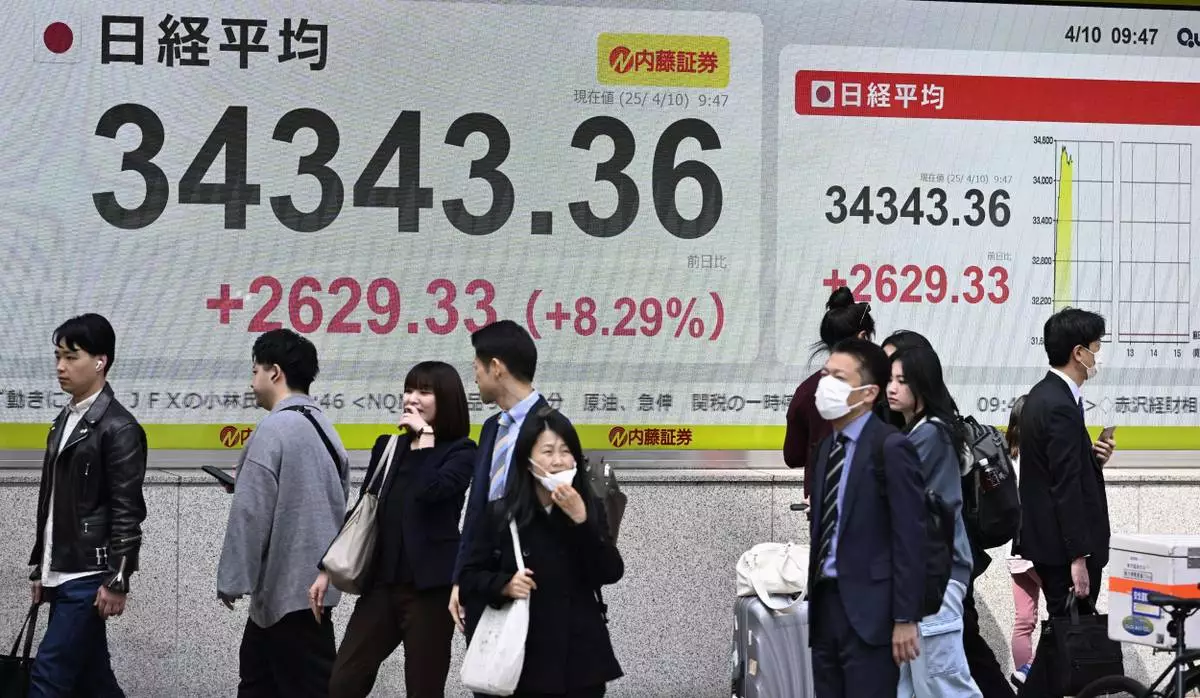
People walk by an electronic board showing Japan's Nikkei 225 index at a securities firm in Tokyo Thursday, April 10, 2025. (Kyodo News via AP)
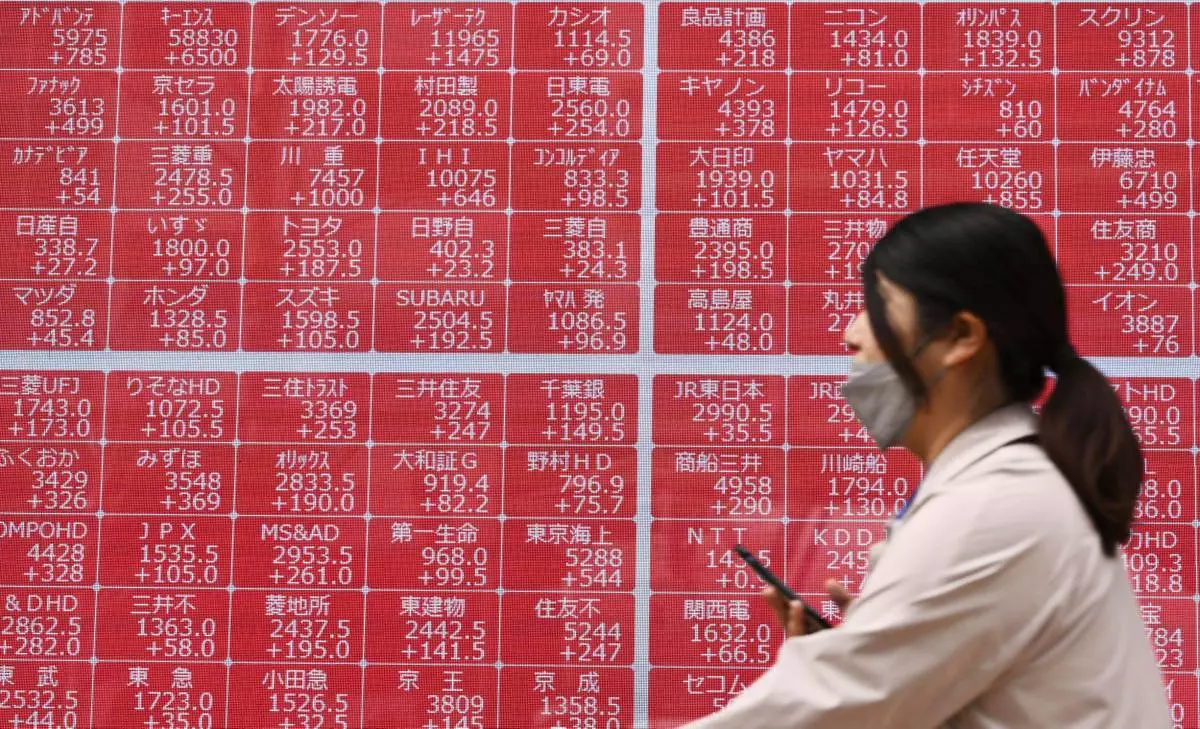
A person walks past an electronic stock board at a securities firm in Tokyo Thursday, April 10, 2025. (Kyodo News via AP)

A currency trader walks by the screens showing the Korea Composite Stock Price Index (KOSPI), left, and the foreign exchange rate between U.S. dollar and South Korean won at a foreign exchange dealing room in Seoul, South Korea, Thursday, April 10, 2025. (AP Photo/Lee Jin-man)

A currency trader watches computer monitors at a foreign exchange dealing room in Seoul, South Korea, Thursday, April 10, 2025. (AP Photo/Lee Jin-man)

A currency trader walks by the screens showing the Korea Composite Stock Price Index (KOSPI), left, the foreign exchange rate between U.S. dollar and South Korean won and the Korean Securities Dealers Automated Quotations (KOSDAQ) at a foreign exchange dealing room in Seoul, South Korea, Thursday, April 10, 2025. (AP Photo/Lee Jin-man)

A currency trader prepares to work near the screens showing the Korea Composite Stock Price Index (KOSPI) and the foreign exchange rate between U.S. dollar and South Korean won at a foreign exchange dealing room in Seoul, South Korea, Thursday, April 10, 2025. (AP Photo/Lee Jin-man)

A currency trader watches computer monitors near the screen showing the foreign exchange rate between U.S. dollar and South Korean won at a foreign exchange dealing room in Seoul, South Korea, Thursday, April 10, 2025. (AP Photo/Lee Jin-man)

President Donald Trump is displayed on a television on the floor at the New York Stock Exchange in New York, Wednesday, April 9, 2025. (AP Photo/Seth Wenig)
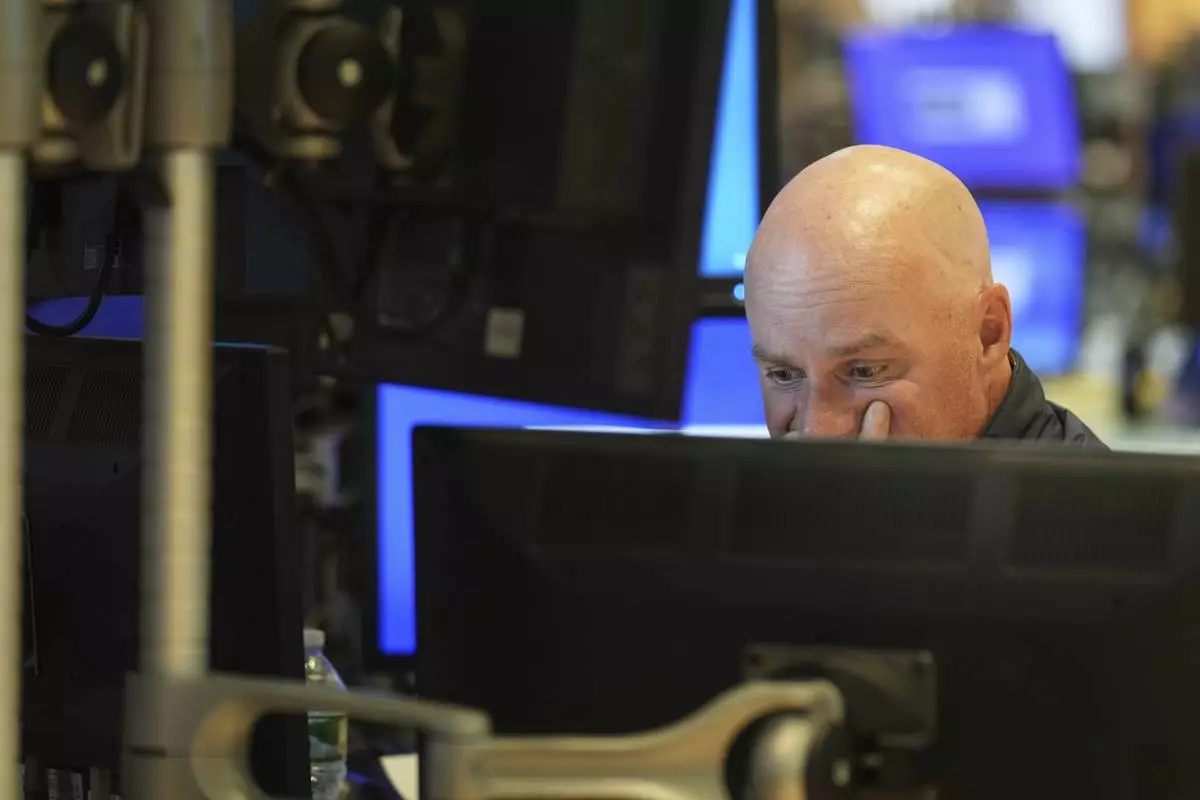
A traders works on the floor at the New York Stock Exchange in New York, Wednesday, April 9, 2025. (AP Photo/Seth Wenig)















